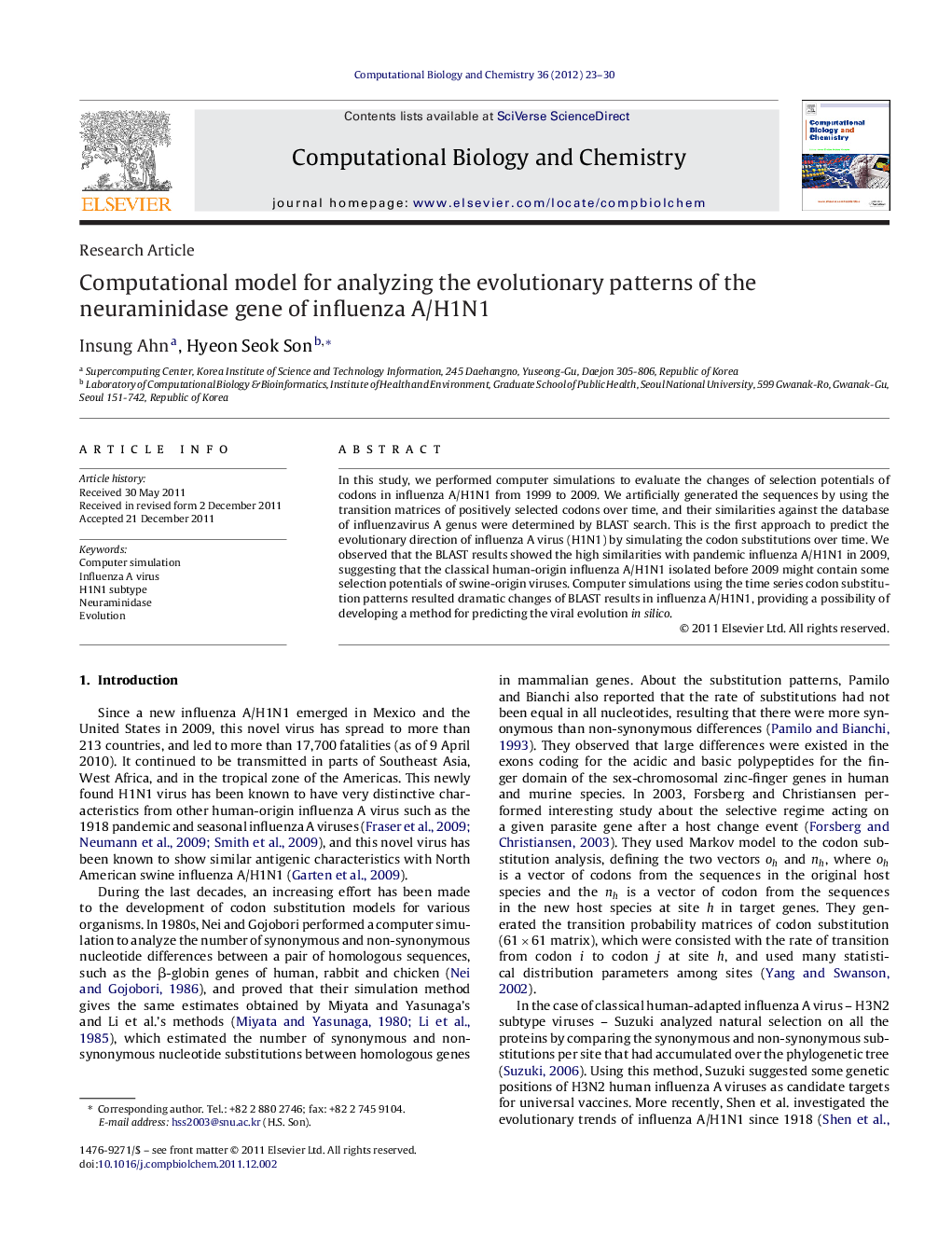| Article ID | Journal | Published Year | Pages | File Type |
|---|---|---|---|---|
| 15205 | Computational Biology and Chemistry | 2012 | 8 Pages |
In this study, we performed computer simulations to evaluate the changes of selection potentials of codons in influenza A/H1N1 from 1999 to 2009. We artificially generated the sequences by using the transition matrices of positively selected codons over time, and their similarities against the database of influenzavirus A genus were determined by BLAST search. This is the first approach to predict the evolutionary direction of influenza A virus (H1N1) by simulating the codon substitutions over time. We observed that the BLAST results showed the high similarities with pandemic influenza A/H1N1 in 2009, suggesting that the classical human-origin influenza A/H1N1 isolated before 2009 might contain some selection potentials of swine-origin viruses. Computer simulations using the time series codon substitution patterns resulted dramatic changes of BLAST results in influenza A/H1N1, providing a possibility of developing a method for predicting the viral evolution in silico.
Graphical abstractFigure optionsDownload full-size imageDownload as PowerPoint slideHighlights► Neuraminidase (NA) gene is the major antigenic determinant in influenza A virus. ► Empirical NA sequences are available in GenBank database at NCBI. ► Artificial NA sequences are generated by using the evolutionary parameters calculated from the real NA genes in silico. ► Computer simulated NA sequences show well-evolved results when they were compared with real data using BLAST.
